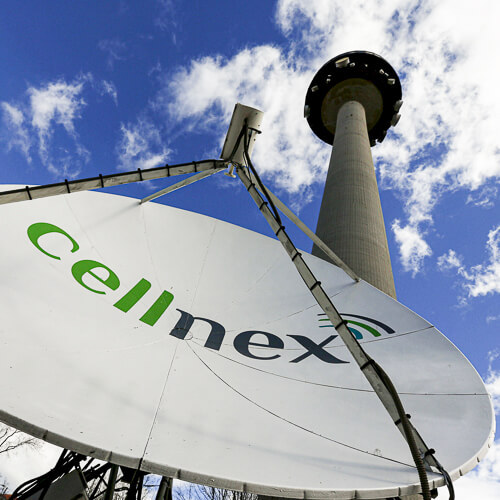
It was the best of times, it was the worst of times for Europe's biggest cell tower operator, which last week saw its adjusted core earnings grow 63% and net losses increase 164% as it eyes expansion into Germany.
Barcelona-based Cellnex has been locked in combat with American Tower Corp for primacy in controlling Europe's telecom towers, where Cellnex remains the largest tower operator.
Cellnex lacks a presence in Germany and, coincidentally, Deutsche Telekom's CEO Tim Hoettges has just said his group is ready to unload its tower business, though quickly adding there was "no time pressure."
Figure 1:  The company plans to spend up to €9 billion on masts purchases in 2022, part of its plan by 2030 to have 130,000 masts in the 12 countries where it currently operates.
The company plans to spend up to €9 billion on masts purchases in 2022, part of its plan by 2030 to have 130,000 masts in the 12 countries where it currently operates.
(Source: REUTERS/Alamy Stock Photo)
Cellnex CEO Tobias Martinez said his company "would love to be in Germany" but, like Hoettges, also played it coy, saying "this company does not depend on being in Germany."
Martinez anyway plans to drop a penny or two in the tower sales, which continues its form in recent years.
In November 2020, Cellnex struck agreements to buy 24,600 telecoms towers and sites from Hong Kong's CK Hutchison for €10 billion, bolstering its Italian, UK and Irish presence, and expanding into Austria, Sweden and Denmark.
Poland represented then Cellnex's big new move in 2021, in a year where it laid out €1.09 billion, increasing its stakes there and in France.
Next up, the company plans up to €9 billion ($10.1 billion) on masts purchases in 2022, part of its plan by 2030 to have 130,000 masts in the 12 countries where it currently operates.
Regulatory tut-tut
There has been one hiccup, though, from this growth spurt.
The UK's Competition and Markets Authority announced in December that CK Hutchinson should have sold these towers and masts to an alternative buyer instead of Cellnex.
Selling these to the market leader, said the competition regulator, raised "significant competition concerns." Cellnex "was not the only option available to it," tutted the competition watchdog.
This is all continuing into a phase two investigation, the results of which are due in March. According to a Reuters report, Cellnex said said it is likely to offset its spending to gain market share with €1.1 billion it may raise from the disposal of masts required by regulators in France and potentially in Britain.
Towering over expectations
Amidst all this big spending, too, Martinez will take some solace that his company's 2021 revenue beat both analysts' and its own expectations to surge 58%, to €2.54 billion.
Its EBITDA (a measure of the company's profitability from operations) increased by 63% to €1.921 billion for the year.
And this year, Cellnex is guiding that these numbers will keep growing.
Its revenue, it forecasts, will continue growing up to between €3.46 and €3.51 billion for the financial year, and EBITDA to somewhere between €2.65 and €2.7 billion.
Unfortunately for the company, however, an even bigger growth spurt also took place in its losses.
Cellnex reported a loss of €351 million ($394 million) from €133 million in 2020, amid consolidating its more recent acquisitions, financing an early retirement plan in Spain, and responding to a tax hike in Britain.
That said, if the CMA comes back requiring Martinez's company to sell some of its newly purchased UK assets, that will bring in cash.
Meanwhile, speaking of the UK, Cellnex and BT have also just signed a new agreement, extending their 2020 original deal into a multi-decade relationship.
All in all, the future looks to be a growth game for Cellnex.
Overall, says Barclays, 66% of European towers are still owned entirely or in part by telcos, compared with under 10% in the US.
And with operators feeling increasingly cash-strapped as they contemplate their own 5G rollouts, a few more years of towering spin-offs and dealmaking seems to stretch ahead.
Related posts:
— Pádraig Belton, contributing editor special to Light Reading
Read more about:
EuropeAbout the Author(s)
You May Also Like











